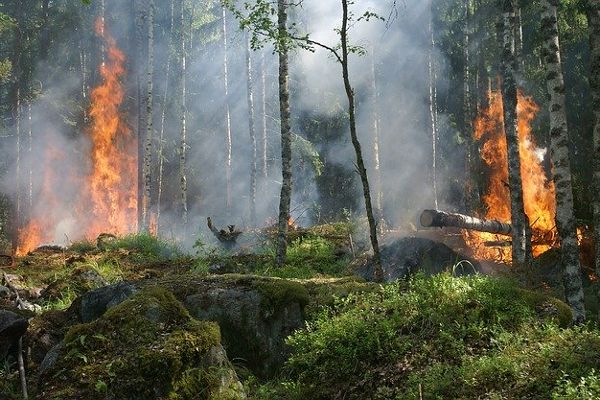Current information on forest fires and risks

The internet offers a wealth of information on forest fire events. Where there is actually a risk of forest fire, how many forest fires have already occurred in Austria, what kind of information is available at international level, and many other things can be found here.
Forest fire database
As of April 2020 the forest fire database contains 6,700 data sets, a major part of which could be documented in the course of the past 12 years. The online database consists of an internal database for administration and a bilingual and freely accessible Web-GIS-Interface. Here interested users can filter the available information on events of the past few years according to different criteria, create graphs and statistics, as well as report on forest fires independently.
Forest Fire Blog
For now almost 20 years the Institute of Silviculture has been operating a Forest Fire Blog. The initiative, which was launched in 2012, provides current information on forest fire events in Austria with comprehensive articles and impressive pictures. Moreover, on the website the attention of the people is drawn to hazardous weather situations, and new insights of forest fire research are published. Apart from statistics and information about events it offers also the opportunity to considerably increase one’s knowledge about forest fires.
ZAMG (Central Institute for Meteorology and Geodynamics)
The Central Institute for Meteorology and Geodynamics (ZAMG) informs also on a daily basis about the Waldbrandgefahr (Forest Fire Risk) in Austria. The forest index used by the Central Institute for Meteorology and Geodynamics is based on the meteorological parameters air temperature, air humidity, wind speed, as well as quantity of precipitation and constitutes thus a purely meteorological assessment of the forest fire risk. Of course, other influencing factors, such as the type of vegetation, the share of deadwood, or human influences also play an important role. They are, however, not taken into consideration in the meteorological risk assessment model.
The forest fire index applied by the Central Institute for Meteorology and Geodynamics constitutes a good indicator, especially for the forest fire risk in summer. However, the calculations with cooler temperatures (late winter, early spring, autumn) show inaccuracies, as the air temperature, being the most important influencing factor of the model, is not so high at this time of the year and influences thus the result of the assessment. Moreover, the assessment of the forest fire risk in mountain areas can be limited, because this area can be dominated by a very small-scale microclimate.
EFFIS (European forest fire information system)
A Europe-wide information system of the Joint Research Center (JRC) of the European Commission has been collecting data on Europe-wide forest fire events since 2004 and makes them available online on a publicly accessible information platform called EFFIS (European Forest Fire Information System). Currently 40 countries are already participating in this initiative and supply data for the system, among others, also some North-African states. EFFIS is supported by experts from the countries in the so-called Expert Group on Forest Fires (EGFF). The participation is on a voluntary basis and there is no financial incentive. From the rising number of participating countries you can see very clearly the importance and the topicality of the issue of forest fires in times of climate change. Austria, too, plays an active role in the expert group EGFF and supports the information system EFFIS.
EUSALP Study
Within the framework of the Interreg Alpine Space Project AlpGov the University of Natural Resources and Life Sciences carried out a study on the topic “Forest fires in the Alps – status quo and future challenges“, commissioned by the Federal Ministry of Agriculture, Forestry, Regions and Water Management. In close cooperation of the EUSALP Action Group 8, good practice examples from all Alpine countries were collected and recommendations for an integrated forest management have been worked out. Representatives of politics, science and of task forces exchanged their knowledge within the framework of a workshop and identified the most important challenges in forest fire prevention, firefighting, and the recovery of areas after a fire in the Alps. Moreover, various options have been outlined to implement an integrated forest fire management in the Alps in view of climate change.
The results of the study are available on the homepage of the EUSALP Aktionsgruppe 8.